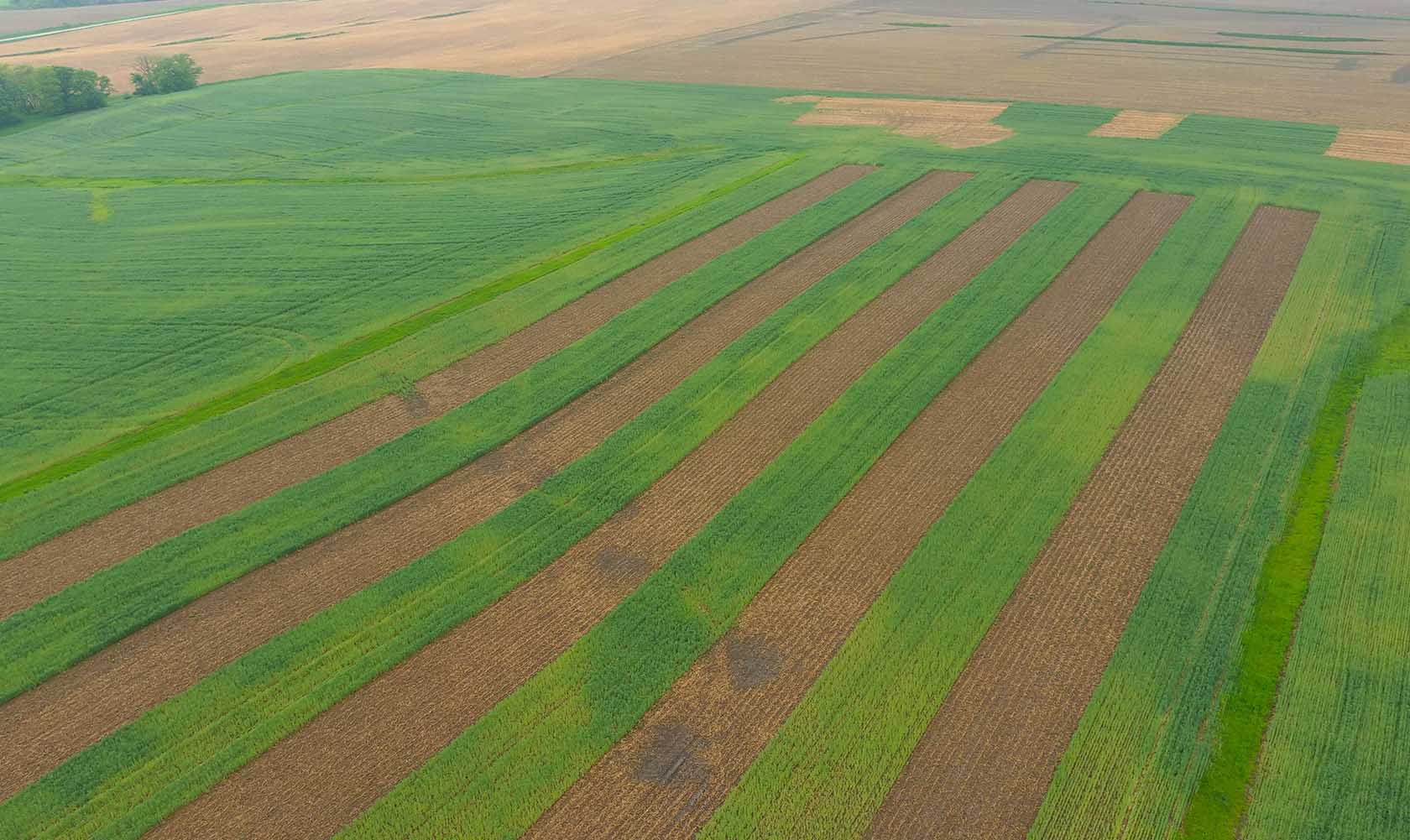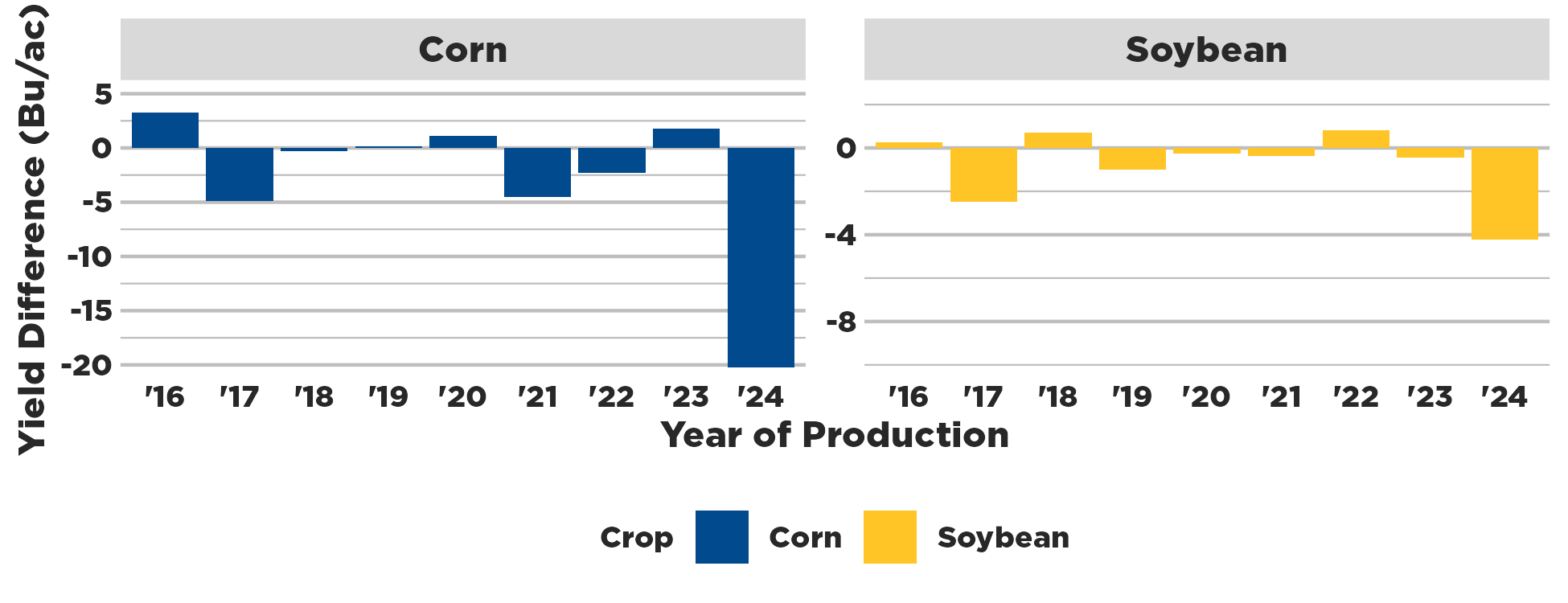
Figure 1 - Strips with and without cover crops in field trial. (Photo: Josh Jeske)
Long-term impacts of cover crops
July 31, 2025 | Rosie Roberts
Key insights
- Yields between cover crop and no cover crop acres are comparable in corn and soybeans.
- Cover crops improve soil compaction and aggregate stability.
- Increased management of cover crops is critical, especially around termination timing.
Will cover crops drastically affect the cash crop's yield? How do cover crops affect soil health and compaction? How do cover crops influence nutrient stratification throughout the soil profile?
In 2023, survey results showed that 3.8 million acres in Iowa were seeded to cover crops. Even with millions of acres utilizing cover crops, there's a need for more research-backed insights to guide best management decisions.
The Iowa Soybean Association (ISA) began studying the management influences and agronomic impacts of cover crops in 2016. It's recognized as the longest on-farm cover crop study in Iowa.
Results from the nine-year, 25-farm study illuminated key learnings around yield drag, termination timing, soil compaction and soil nitrates.
Research participants split a field into replicated strips of cover crops compared to no cover crops within their traditional management systems.
Yield drag?
Soybeans with cover crops averaged 63.2 bushels per acre, while soybeans without cover crops yielded 64.6 bushels per acre. This 1.4 bushel-per-acre difference was calculated from 56 site-years of soybeans.
On average, corn following cover crops yielded 227 bushels per acre, compared to 229 bushels per acre without a cover crop. This two-bushel difference was determined after analyzing 72 site-years of corn across nine crop years.
Across various soil types, weather patterns and latitudes, soybean and corn yields were comparable between cover crop and no cover crop comparisons.
Cover crops require an increased level of management to mitigate risks. Across all site-years yields were comparable, with the exception of 2017 and 2024's wet spring. In years when termination timing was delayed, cover crop biomass accumulated at higher rates. This overgrowth of cover crops and delayed termination timing had a strong negative effect on the following cash crop's yield potential. See the consequences of late termination and out-of-control residue in the graph below.

Soil health effects
Aggregate stability, according to the U.S. Department of Agriculture (USDA), is a key soil health indicator, leading to improved soil structure, organic matter, nutrient cycling and biological activity. In this study, aggregate stability improved under the cover cropped acres, showing a noticeable increase when compared to the areas without a cover crop. ISA also soil tested for nine other soil health indicators, which resulted in comparable values between the cover crop and no cover crop treatments.
Soil compaction
In 2024, ISA assessed a subset of the participating locations for compaction differences. The cover crop acres showed a 6% reduction in soil compaction throughout the soil profile. Soil penetrometers were used to measure the compaction levels between treatments and locations. While there was a decrease in compaction, none of the sampled areas experienced yield-limiting compaction above 300 pounds per square inch (PSI). These results prove that across varying soil types, cover crops significantly reduced soil compaction.
Nutrient stratification
Early season sampling from 0-24 inches deep showed cover crops reduced soil nitrates by 44%, confirming cover crop's ability to scavenge excess nitrates in the soil profile.
The late spring nitrate test showed comparable nitrate levels in the top 0-7 inches of the soil; however, deeper, at 7-14 inches, the nitrogen concentration differed. Under cover crops, the deeper soil profile had 36% less nitrates than under no cover crops, showcasing the cover's ability to influence nitrate levels at various soil depths.
This long-term cover crop research identified multiple benefits, answered agronomic questions, and enforces the timeliness of management decisions. Cover crops remain an effective tool for farm operation's toolboxes to use on their path to reach their sustainability and production goals.
See the Insights Report, sent to you with this edition of the Iowa Soybean Review, for more research observations on cover crops.
This study is brought to you by Iowa Soybean Association in partnership with Iowa Corn Promotion Board and the Soil Health Partnership.
Written by Rosie Roberts.
Back